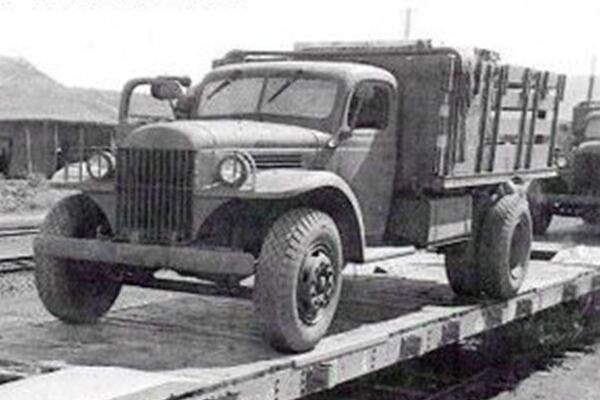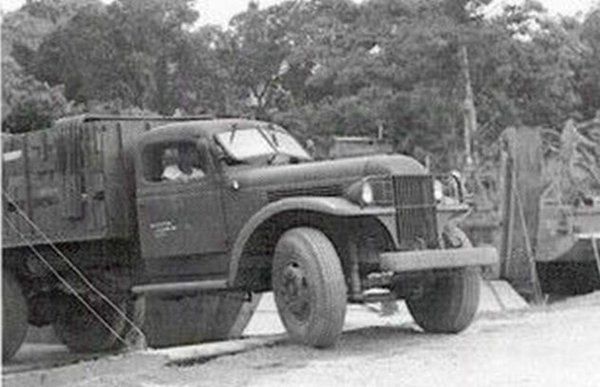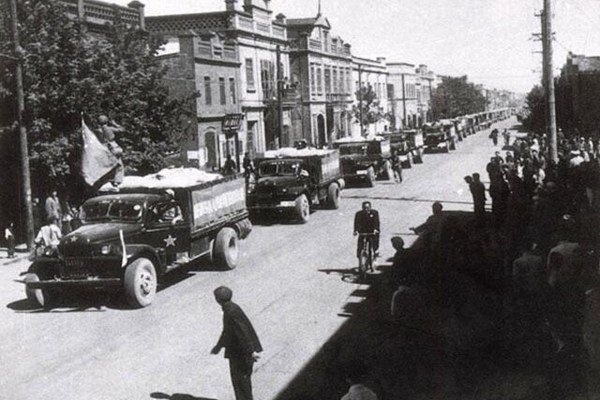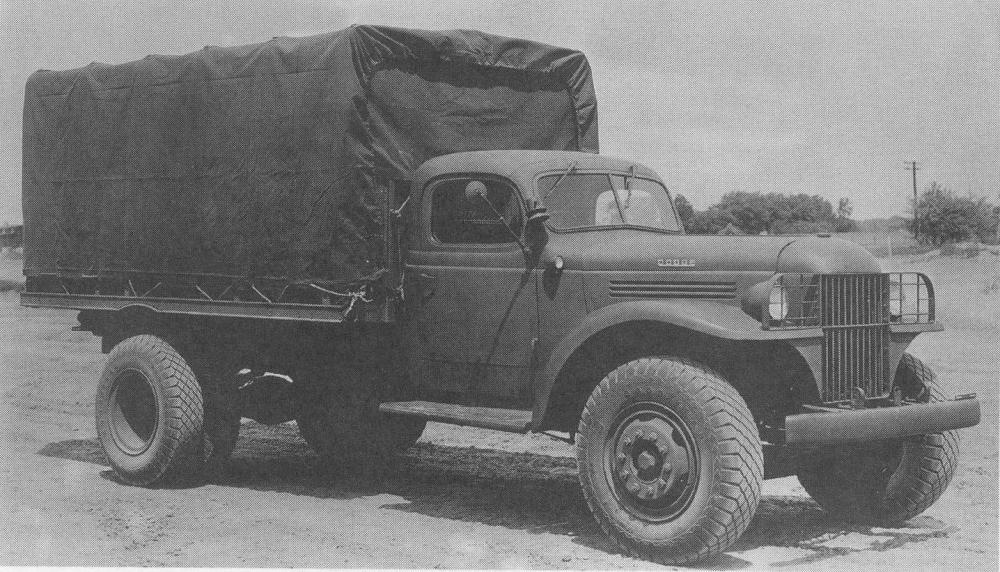
kscarbel2
Moderator-
Posts
18,886 -
Joined
-
Days Won
114
Content Type
Profiles
Forums
Gallery
Events
Blogs
BMT Wiki
Collections
Store
Everything posted by kscarbel2
-
Hino Australia / February 21, 2017 The astonishing, all-new Hino 500 Series "Wide Cab" redefines what to expect from a hard working truck. Its unrivaled build quality delivers next level chassis, suspension and axles. You also have more engine and transmission options to choose from including the 6 speed Allison automatic transmission. .
-
Yes, the Giga is alive and well.................http://www.isuzu.com.au/truck-range/giga/
-
Mack DM external sun visor
kscarbel2 replied to tippi98custom's topic in Antique and Classic Mack Trucks General Discussion
It appears that Lund doesn't offer them anymore. http://www.lundinternational.com/products/lund The best visor was the factory installed unit. It was never offered as a kit, but ordering the visor and brackets separately was easily done. The Lund kit was sold thru Mack parts departments. The factory visor came from another supplier. -
Mack DM external sun visor
kscarbel2 replied to tippi98custom's topic in Antique and Classic Mack Trucks General Discussion
When you called Watts Mack (provider of the BMT website) at 1-888-304-6225, what did they say? -
Link for readers to what Paul is mentioning.............https://en.wikipedia.org/wiki/Belterra,_Pará
-
Associated Press / February 17, 2017 Navistar International Corp. has been awarded a $35 million contract to deliver 40 armored vehicles to Pakistan from its Mississippi plant. The U.S. Army announced the contract Thursday, saying Navistar, based in Lisle, Illinois, had made the only bid for the mine resistant ambush protected MaxxPro Dash DXM trucks. Work is supposed to be done at Navistar's plant in West Point, as well as in Pakistan, and is estimated to be finished by Oct. 31, 2018. Although the West Point plant had laid off all its workers in 2013, it has since won a series of contracts to build or refurbish vehicles for the U.S. Army and foreign militaries. Spokeswoman Amy McCaskill says the new contract, combined with existing work, means the plant will maintain its current 340 employees.
-
Wilson Trucking set to be sold Staunton News Leader / February 21, 2017 FISHERSVILLE - Wilson Trucking Corp. announced Monday there could be some changes coming to the company. Wilson Trucking has signed a letter of intent with Central Freight Lines Inc., which will buy certain assets of Wilson Trucking and expand Central Freight Lines' service territory into the Southeastern U.S., a release said. "This is very good news for the many loyal customers of Wilson," said C.L. Wilson, chairman and CEO of Wilson Trucking, said in a release. "Central Freight Lines has been in business for over 90 years just like Wilson Trucking and I'm confident Wilson's customers will be quite impressed with the many service offerings of Central Freight Lines." It is unclear about what will happen to the company in Fishersville and its employees and customers. The News Leader has reached out to Wilson Trucking. But, according to the release, the company said it will continue to provide customers the "best available less-than-load service in the Southeast." "As with any transaction like this there will be additional information coming out about a wide array of topics," the release said. "Our commitment to you is to keep you informed in a timely fashion about all topics that directly affect our business relationship." The Texas-based Central Freight Lines is expected to close on the company by March 31. "This is an important move for Central Freight Lines," said Don Orr, president and CEO of Central Freight Lines, in a release. "It allows us to fulfill our strategy of being the premier coast-to-coast Sunbelt LTL provider in the industry. We look forward to adding Wilson's customers to Central's list of highly satisfied customers." Wilson Trucking, based out of Fishersville, was started in the early 1920s by C.G. Wilson when he used a Ford Model T pick-up truck to haul products from the Wilson farm to the metro marketplace, its website said. The company grew with the family's second generation. In the 1950s C.W. Wilson took over until the 1990s. C.L. Wilson, along with T.G. Wilson, are the third generation of the family to run the company, its website said. Wilson Trucking encompasses nine states and Washington, D.C. Related reading - http://wilsontrucking.com/news/pr20170220.htm
-
Remember, the lighter Dodge T203, many of which were supplied to the Soviet Union under Lend-Lease, was only rated at 1-1/2 tons. This T234 variant was beefed up considerably to have a 2-1/2 ton rating alike the much more substantial Diamond T Model 614, International K6 and K7, Federal Model 2G and GMC ACX.
-
I aim to please Bob.
-
Fleet Owner / February 21, 2017 Optimism based on strong January Class 8 and medium-duty orders Strong January orders for Class 8 and medium-duty trucks – especially for vocational units – may indicate that the “bottom” of the current truck buying slump may now be firmly in the industry’s rear-view mirror, according to industry analysts. Heavy duty net orders jumped to a thirteen-month high in January at 22,188 units, lending further support to the notion that the second and third quarters of 2016 “marked the bottom of the current cycle.” Class 8 backlogs “moved in the right direction” as well, with stronger orders and a “modest build” allowing backlogs to rise 7,600 units to 99,600 units in January compared to December last year. On top of that, orders for vocational equipment jumped to a two-year high last month of 8,500 units, or 38.5% of January’s Class 8 order intake. Echoing the positive demand of Class 8, medium-duty net orders hit a six-month high of 22,744 units in January, which translated into a 3% month-over-month increase and a 31% year-over-year. “The improvement was broad-based, with truck, bus and RV [recreational vehicle] orders all posting year-over-year and month-over-month gains,” they said. “January was the best month for medium-duty orders since February 2008.”
-
Utilimaster Seeks Withdrawal from USPS Next Generation Delivery Vehicle Program Trailer/Body Builders / February 21, 2017 Spartan Motors announced that its Spartan Fleet Vehicles and Services (FVS) business unit—which encompasses the Utilimaster go-to-market brand—has stopped development on the United States Postal Service (USPS) Next Generation Delivery Vehicle (NGDV) Program as a prime contractor in the functional prototype development project and has sought withdrawal from the USPS. Spartan is continuing efforts to support this project and will partner with a leading USPS prototype award participant, to provide interior cargo solutions specific for the USPS's needs. "As a global leader in fleet vehicle design and production, we were honored to be among a select group of vehicle makers to win the USPS prototype award," said Daryl Adams, President and Chief Executive Officer of Spartan Motors. "However, when we took a close look at the economics as a result of our inability to reach a satisfactory agreement with our commercial chassis supplier, further participation in the program as the primary body builder did not meet our baseline financial targets. Working closely with one of the USPS prototype award participants will enable us to participate in this significant NGDV program without the related upfront developmental capital requirement, while building what we're best at for the fleet market—custom interior cargo management solutions." Utilimaster has produced route delivery and other vehicles for the USPS since 1999. As previously announced, Utilimaster was one of six vehicle manufacturers selected to receive the prototype award as part of a comprehensive USPS Request for Proposal (RFP) process. After a thorough evaluation, in-depth supplier consideration, and extensive financial modeling, Spartan has determined that remaining in the USPS NGDV project as a cargo management supplier provides a better return on capital, which better serves the Company and its shareholders. "We would like to extend our most sincere thanks to the USPS for considering and selecting Spartan to take part in the evolution of their fleet," continued Adams. "We look forward to assisting with development effort and providing the USPS with high quality cargo management solutions that best meet the needs of their business, while ensuring improved safety, productivity, and performance for their route delivery personnel."
-
Heavy Duty Trucking / February 21, 2017 Following Navistar International’s annual shareholder meeting on Feb. 14, the board of directors has elected company president and CEO Troy A. Clarke as its chairman. Clarke replaces the retired James H. Keyes, who had served as non-executive chairman of Navistar’s board since April 2013. The change was effective immediately. Additionally, board member Gen. Stanley A. McChrystal was elected as the independent lead director. "It has been a pleasure to serve on the board for the last four years, and I am honored to have been elected chairman," said Clarke. "This is an exciting time for Navistar, as we pursue our growth strategies highlighted by significant new product launches and our pending strategic alliance with Volkswagen Truck & Bus. I look forward to continuing to work with our very dynamic board, which is focused on the future and supportive of management's efforts to create a great truck company." At the company's annual shareholder meeting, stockholders elected nine incumbent directors to the board of directors. The company also ratified the selection of KPMG as its independent registered public accounting firm; approved, on an advisory basis, the compensation of key company executives, and approved a preferred one-year frequency of the advisory vote on executive compensation. .
-
Truck News / February 21, 2017 After a long restoration process, Team Penske has unveiled a customized 1972 International Fleetstar truck known in the racing circles as “The Blue Hilton.” According to Penske, the truck was one of the first known enclosed transporters used for racing purposes. It served the team in various capacities from 1972-1983. The restoration is complete down to the smallest detail, including authentic PPG paint and hand lettering just in time for Roger Penske’s 80th birthday that was celebrated on Feb. 20. An iconic part of team history, The Blue Hilton transported the No. 66 McLaren that Mark Donohue drove to victory in the 1972 Indianapolis 500 – the first of Team Penske’s record 16 wins in the “Greatest Spectacle in Racing.” In conjunction with its sister transporter, “The White Hilton,” it was used to transport the powerful, championship-winning Porsche 917s that dominated the landscape of the Can-Am Series in the early 1970s with George Follmer and Donohue before it was sold in 1983. “After we confirmed that it was, in fact, the Blue Hilton that was for sale, I called Brian Hard (president of Penske Truck Leasing) and we agreed that we had to find a way to bring her back to life,” said Team Penske president Tim Cindric. “This transporter was there when the foundation was laid for Team Penske and it is symbolic of the way in which we operate today. Everyone at Penske Truck Leasing did an unbelievable job restoring this vehicle. I can’t wait for Roger to see it in person, as it is something he will cherish.” Penske says The Blue Hilton was the precursor to today’s closed transporters that carry cars, parts, and equipment to race tracks all over the globe. With his keen engineering mind, Donohue – a 2016 inaugural Team Penske Hall of Fame inductee and the organization’s first champion driver – designed the payload area of the truck based on efficiency and functionality. It was named the Blue Hilton based on its royal blue exterior and the sleeper area above the cab, which is a standard feature in today’s transporters. The restoration was estimated to take more than 8,00 man hours to complete, thanks to the help from Morgan Corporation and a dedicated group led by Penske Truck Leasing’s James Svaasand, Michael Klotz, and David Hall – along with Team Penske Historian Bernie King. The truck was purchased from George Boyd of Urbana, Illinois, who had utilized it while competing in various racing series until retiring it to a spot on his property. He was the only owner of the truck after its days at Team Penske. “When you talk with the crew members that drove and worked out of this transporter over those years, and you look at the photos from the many cars it carried, you see how the Blue Hilton was an integral part of our history,” said King. “It’s certainly very much a part of the Team Penske heritage. Everyone at Penske Truck Leasing that was involved did a fantastic job of restoring this truck to how it was when it ran and carried many of the team’s winning cars.” Initially, the Blue Hilton will be on display at the Team Penske headquarters in Mooresville, N.C., where fans can view it from the Fan Walk that runs the length of the massive shop floor. .
-
Autoblog / February 221, 2017 Henry Ford was a man with a lot of dreams, though some of those dreams didn't exactly pan out. Case in point, the creepily named "Fordlândia" in the heart of Brazil's Amazon rainforest. The New York Times reminded us of one of our favorite pieces of automotive history this morning with an in-depth look at what happened when the Ford Motor Company tried to create a rubber plantation. The sordid tale began in 1928, when Ford founded the town in the heart of the Amazon in an attempt to grow and harvest the rubber needed for his cars. Ford was famous for wanting control over each step of the car building process. He also feared a European monopoly on rubber after Brazilian rubber trees made their way to plantations in several tropical, British-held colonies. Ford, always disdainful of 'expert advice', built a mid-western town in the jungle, complete with red fire hydrants and bungalows designed in Michigan. He even brought in Albert Khan, the architect responsible for Detroit's art deco skyscrapers and grandest homes, to design the hospital. In his mind's eye he saw rubber trees stretching into the distance, serviced by Brazilians living a clean, American-style life. Ford also saw Fordlândia as another chance to enforce his own moral code. Ford banned alcohol in his jungle kingdom. His infamous Sociology Department -- goons who investigated Ford's Detroit employees to ensure their private lives met their employer's expectations -- became the sanitation squads. These squads would clear the town of standing water to prevent malaria, but also check workers for venereal disease. Unsurprisingly, the substandard and diseased rubber trees failed and the workers rioted after living on oatmeal and canned peaches for weeks on end. Ford handed control of the town over to the Brazilian government after WWII. Today almost 2,000 people live in the crumbling ruins of Fordlândia, squatting in American-style homes in the heart of the Amazon. Guilherme Lisboa, the owner of a small inn in Fordlândia, perfectly summed to Ford's legacy to the Times. "It turns out Detroit isn't the only place where Ford produced ruins." For more on Fordlândia, we recommend Greg Grandin's book that documents Ford's strange undertaking. .
-
UPS Press Release / February 21, 2017 UPS announced it has successfully tested a drone that launches from the top of a delivery truck. The test was conducted in collaboration with drone-maker Workhorse. Sending drones to make deliveries from package cars could bolster efficiency in our network by reducing miles driven. . .
-
US exporters warn of missed chance for tax code revamp The Financial Times / February 21, 2017 The heads of GE, Boeing and other large corporations have warned that the US may not have another opportunity to revamp its tax code for 30 years if it misses out on a chance to do so now amid uproar over a proposed import tax. In a letter to Congress, 16 CEOs from exporters including Caterpillar, Dow Chemical and Pfizer issued their strongest statements of support yet for the import tax, which retailers, oil refiners and other importers are fighting to kill. The import tax is the linchpin of a radical plan from Republicans in the House of Representatives to overhaul the tax code for the first time since 1986. But President Donald Trump has yet to say whether he will embrace it to fulfill his promise of tax reform. “If we miss this chance to fundamentally reshape the tax code, it might take another 30 years before we have another chance to try,” the CEOs wrote in a letter sent on Tuesday. The lobbying war between importers and exporters — whose products would go untaxed if shipped overseas under the plan — has already slowed the writing of legislation and prompted some senators to come out against the House plan. With some lobbyists now predicting the only viable reforms could comprise a modest rate cut and some streamlining, the CEOs wrote that “incremental tweaks will not level the playing field for American workers or dramatically reinvigorate economic growth”. Mr Trump had pinned his hopes on tax reform as a key tool for re-energizing business and the US economy but it has turned into one of several policy areas where progress has been scuppered either by Republican infighting or White House mis-steps. Retailers such as Walmart and Target, which depend heavily on imported goods, have formed a coalition to warn that the import tax would be a mortal threat to their businesses, leaving them with little choice but to raise prices for consumers. The export CEOs, who include the heads of companies pilloried in the past for paying ultra-low tax bills, did not address what the proposal would do to how much tax they pay. But they adopted an argument of House Republicans, including Speaker Paul Ryan, by saying: “Our tax code penalises American workers who make products or provide services sold abroad, while favoring their international competitors.” By taxing imports and exempting exports, the plan’s backers say it would bring the US into line with other countries that already levy value added tax* (VAT) on imported products but do not tax domestically made products on their way out. Some economists dispute the comparison, noting among other things that VAT is a consumption tax whereas the Republican proposal is a tax on businesses. A post-election rally in the US stock market was driven partly by hopes of tax reform because US companies — including those signing the letter — have long complained of an “antiquated” tax system that charges them the highest rates in the OECD. The letter was sent to Mr Ryan and Senate majority leader Mitch McConnell, another Republican, as well as to Nancy Pelosi and Chuck Schumer, the top Democrats in the House and Senate respectively. Other signatories are the chief executives of Celanese, Celgene, Eli Lilly, Merck, Oracle, Raytheon and United Technologies. * Value Added Tax (VAT) is a scam in Europe and elsewhere that resulting in high consumer prices.
-
Trump and Immigration (Illegal Immigrants in the US)
kscarbel2 replied to kscarbel2's topic in Odds and Ends
If it actually happens, sounds great. A huge mistake, a lack of law enforcement, finally being corrected. Enter the country legally, or don’t enter at all. ---------------------------------------------------------------------------- Associated Press / February 21, 2017 Millions of people living in the United States illegally could be targeted for deportation - including people simply arrested for traffic violations - under a sweeping rewrite of immigration enforcement policies announced Tuesday by the Trump administration. Any immigrant who is in the country illegally and is charged or convicted of any offense, or even suspected of a crime, will now be an enforcement priority, according to Homeland Security Department memos signed by Secretary John Kelly. That could include people arrested for shoplifting or minor offenses - or simply having crossed the border illegally. -
360 Truck / February 21, 2017 Isuzu Motors and its Chongqing (Chungking)-based China partner Qingling Motors have launched the new model VC61 6x4 heavy tractor equipped with a 16-litre (15.681L) powerplant rated at 420 and 460 horsepower. Engine model Horsepower 6WG1-TCN2 420 6WG1-TCG51 460 Note that, like the model VC46, Isuzu is adapting its N-Series light truck cab for this model rather than using the "Giga" cab, presumably to obtain a lower cost point. A 10-liter (9.839L) 4x2 tractor is also now available equipped with the 380 horsepower model 6UZ1-TCG50 engine. .
-
Many of us are familiar with both the civilian and military Dodge trucks of the past. However one model that is often forgotten is the military issue model T-234. During World War II, the 2-1/2 ton rated Dodge T-234 was used in the India Theatre for the construction of the Ledo Road* (1942-1944), a critical supply route after the Burma Road was cut off by the Japanese. The project was led by U.S. Army General Joeseph "Vinegar Joe" Stilwell**. * https://en.wikipedia.org/wiki/Ledo_Road ** https://en.wikipedia.org/wiki/Joseph_Stilwell Although built with the standard civilian Dodge cab and hood, the front fenders, grille and axle were different from U.S. models. The T-234 was equipped with large 10.00-20 tires, and had a 170-inch wheelbase. Dodge's 228 cubic inch L-head model T-203 engine, rated at 99 horsepower and 188 lb/ft (255 N.m) of torque, powered early models. Later, the 128 horsepower 331 cubic inch engine was fitted. The T-234 was right-hand drive, as the British were responsible for India and Burma. Related reading - http://imageevent.com/vc40wc41/burmadogetrucks;jsessionid=cywsk4orn1.camel_s?n=0&z=2&c=2&x=1&m=14&w=0&p=0 .
-
“The government has the ability to repeat and control the commercial airwaves. In a sense, they repeat every so often: terrorism – fear – terrorism – fear. Repeat, repeat, repeat, that works – propaganda.” “What Washington seems to want to do is lock up and only give the leaks they want, the leaks that favor the U.S., like the Panama Papers. They control those leaks, but not the ones that are critical of the government. We're living in a closed news environment. It's an information war in a bad way." Oliver Stone .
-
Like him or not, Snowden verified that we were not being told anywhere near the truth. Oliver Stone hits the nail on the head at 4:40 .
-
Mack 10 speed need parts
kscarbel2 replied to 88RD688S's topic in Antique and Classic Mack Trucks General Discussion
What did Watt's Mack (provider of the BMT website) say when you called them at 1-888-304-6225 ? -
I'd argue this goes back far longer. During the Civil War, WW1, WW2 and Korea, for example, any bad news was suppressed or distorted. If deemed desirable and possible, it was squelched altogether,
-
Matt Wood, Owner/Driver / February 20, 2017 A little known and quite rare truck in Australia, Matt Wood catches up with an International DCO and an owner with a story to tell. There was a time when 200hp was something to brag about in a truck. It was also a time when sleeper cabs were a luxury in long haul trucking, let alone a prime mover that only had one gear stick. As the old saying went, "if it’s got headlights you don’t need a bunk." Light Heavy Weight The International DCO isn’t exactly an iconic model. It doesn’t feature highly in the soot stained annals of Aussie highway myth and folklore. For a start the fully imported cab-over was only on the market for a couple of short years before the arrival of the more popular cab-over Transtar that replaced it. Yet for a brief time it was regarded as a big highway banger, an All-American lightweight that packed a heavy weight punch. Its moment in the sun earned the Emeryville USA built Inter a few loyal adherents over the years as a new chapter of Australian long haul trucking dawned. That new chapter of big bore trucking was to see a Kenworth factory open locally and European brands like Volvo start to take root. Older readers of now departed Truck and Bus magazine may recall the face of Don McGlinchie. He was often photographed driving the latest and greatest that the industry had to offer as a road test driver for truck reviews. One memorable cover photo from the early 1980’s shows a stern faced Don steering a then brand new International T-Line up Mount Victoria. The same pic also shows our very own mustachioed and rather hirsute Steve Brooks driving the XD Falcon camera car just in front of it. Even today, Brooks still describes Don as arguably the finest driver of a truck he has ever come across and makes no secret of his admiration for the man who was, in so many ways, a greatly respected and trusted mentor. Don has been a loyal proponent of the International brand for most of his career as an owner-driver. And the immaculate International DCO you see gracing these pages was originally bought by Don back in the late 1960s. Mechanical Beginnings Starting out as a mechanic in Sydney’s outer West back in the 1950’s Don was lured into the world of trucking by the promise of big money even if it meant hard graft. A mate by the name of Ken Archer had just bought a truck for brewery work and young Don was earning a little extra on the side helping Ken out with it. Finally Don decided to take the plunge into being an owner-driver, "I thought I could make a dollar, " he recalls. So in 1959 he bought a second hand Ford F600 prime mover. "That truck nearly broke me on the first trip!" Don muses, "I took on a load for Antill Ranger, a load of wool from Lake Station out West of Cunnamulla." The poor old Ford Y block V8 threw a leg out of bed on the trip back to Sydney, the stricken truck was towed to the top of Mount Victoria as Don tried in vain to get an advance on his pay to repair the stricken Ford. The answer was a resounding no, so Don had to handball the load of wool onto a mate’s truck to get it in and to collect his payment. V8 Woes The Ford continued to prove troublesome so, Don bought a new F600 thinking it would be more reliable. It wasn’t. "Why Ford thought that a small block V8 used in a family car would be any good in a truck is beyond me," says Don. A repo Commer Knocker then came Don’s way for the right price, "That was the truck that started to make me some money." The Commer ran mainly Sydney/Perth with a pan full of refrigerators with Don at the wheel. At this stage Don was still using the train from Port Augusta, however once he started making a dollar he upgraded to a 6V53 Detroit powered International R190 before again upgrading to a single drive Mack B61-673T. He then decided to tackle the Nullarbor dirt on a regular basis rather than sit around on the train. The selling point of the International DCO back in the day was it’s relatively big power and light tare weight. All DCO models arrived on the boat from the US as slim line day cabs and most were single drive. Power came via Cummins NT initially at 250 and 280hp, but later turbo engines copped improved piston cooling and could pump out 335hp. The right hand drive configuration for Oz meant that the American front mounted turbocharger had to go so it was relocated to the rear of the engine. Behind the Cummins sat a 12-speed Spicer transmission putting power into Inter diffs. The DCO you see here came Don’s way in 1969, it had been sitting in a Sydney transport yard owned by Phil Murray and it caught Don’s eye. Many Aussie DCOs had been converted to sleeper cabs, usually just a ¾ style add on. This truck however had the full Ansair sleeper treatment. Alterations and Modifications Never one to make do with what he was being presented with, Don set about making the Inter a little more bomb proof to cope with the somewhat optimistic loads that were being slung onto it’s back. The International diffs got the flick in favour of 44,000lb Rockwell SSHDs. And while the Spicer has its fans, Don flicked this in favour of a 15-speed overdrive Roady. "The Spicer just didn’t stand up in the dirt and dust". He also fitted a Ross power steering set up and the Cummins copped a Jake brake for extra braking bite. The hard-working DCO didn’t just run Sydney to Perth either. Don and the Inter also took loads of mining equipment to the Northern Territory and even to Mt Isa in QLD. But time and toil took its toll and by 1974 Don was looking to have a break and the DCO went up for sale. The tough cab-over was then sold to Retriever Towing and subsequently became a regular sight on Sydney’s road network for nearly four decades. Back In The Driver’s Seat After a year off doing odd jobs and moving trucks around, life on the road beckoned to Don again, and in 1976 a new Detroit 892T powered Atkinson soon appeared in the driveway, not long after Don also scored the Truck and Bus test driver gig. The placcy Atki hauled steel out of Clyde Rail and spent years pouring tonnes of steel into Newcastle out of Sydney. Don finally parted with the Atkinson in 1990. He then scored a job as an employee driver hauling a fuel tanker subbied to BP. Over the last 20 years Don has spent his time delivering new trucks all over the country for dealers. Now aged 80 Don still finds time to turn a wheel moving a V8 Supercar display trailer around the countryside. With all that experience behind the wheel under his belt, I just had to ask what his favourite truck was out of the dozens he’s driven over the years. He only thinks for a split-second before replying, "The Transtar 4700 I drove on the fuel job," "It had a Detroit Series 60 in it and would have to be the nicest truck I’ve driven." But in 2012 Don had the chance to be reunited with his old DCO. The International tow truck had been working hard for it’s money but the time had come for it to be retired, "It was working up until the day I bought it," says Don. Mammoth Task The whole rig was backed into Don’s workshop and the mammoth task of returning it to its former glory commenced. Unfortunately like most restos things didn’t go according to plan. Don pulled the cab off and started repairing the numerous cracks and dings in the chassis rails. But it was only after investing hours in the front end that he pulled the wrecker body off the back, "the chassis rails were like swiss cheese, full of cracks, holes and patch up jobs," Don says wearily. Adding to these woes the DCO was on its 3rd or 4th engine as well so a repower was also in order. The rivet counters out there may be a little irked but the DCO scored a new chassis courtesy of a shabby old Kenworth W900. A 14 litre Cummins was also slotted between the rails. This will no doubt annoy the KW fans out there as well! The KW theme continues underneath with Kenworth Airglide suspension ironing out the bumps out back. But clearly Don has always done things his own way and the end result, regardless of rolling component heritage is stunning. I climbed awkwardly into the passenger seat as Don fired up the Cummins BC3 residing under the cab. The big red donk coughed into life and idled away smoothly as we rolled out of the shed. Bobtail Drive In the driver’s seat Don looks as if he’s a part of the DCO, his work hardened hands deftly pluck the gears as we bobtailed through the outer-suburban streets. The interior too has had the McGlinchie treatment. As another former DCO driver from back in the day attests, "There wasn’t much in the cab of those things, they were pretty much just a shed inside." Don has crafted his own wrap around dash that echoes the lines of those found in a 1980’s T-Line or Atkinson. A padded overhead console also provides a place to store knickknacks. The sleeper with it’s upholstered panels also looks cosier than one would expect from a truck that dates back to the mid-1960s. Then it’s my turn to climb behind the wheel. Cab entry and egress must not have been a high priority back in 1965! It’s clear very quickly though, that Don’s resurrection of the International hasn’t just renewed it, the truck has been transformed. With a sweet Holset whistle floating over the Cummins rumble I let the DCO unwind a little. It’s an evocative sound that recalls the 1980’s more than the 1960s. A time of festoon lights, bad hair and chattering AM CB radios. Modern Nostalgia The 15 overdrive is a smooth shifter and the whole truck feels like you could hitch it to a loaded trailer and hit the highway. It feels that solid. The nostalgia trip comes from peering through the split windscreen as the top mounted wipers judder across your field of vision. As the tacho climbs the Cummins let rip with a satisfying bellow, but with no load on there’s no need to push it. Bobtail it’s a relaxed drive. The ride itself is also smoother than anticipated, no doubt this is partly due to the Airglide rear end as well as the G88 Volvo cab suspension that Don has fitted to the back of that smooth American cab. Like so many classic car and hot rod builds this truck reflects the dedication, innovation and workmanship of its owner. Don didn’t build this truck to satisfy historians and purists, he built a truck that reflects him and the long history that he has had with Australian trucking. This International DCO is both an understated worker and a gleaming tribute to the sort of smarts and dedication that can only come from years of hard work and experience. Sidebar-Knights Of The Road Victorian based tanker company Knight’s of Kilmore operated arguably the best-known and certainly largest International DCO fleet in Australia in the late 1960s. Jack and Allen Knight remained loyal International customers for decades. The first DCOs to join the Knights fleet used naturally aspirated 250hp Cummins power and retained the 12-speed Spicer ‘box, later trucks got the turboed 335. These trucks were initially single drive but Knights fitted some with air operated pusher axles to bump up carrying capacity. As one former Knights driver recalls, "They were a very quick truck in their day, but the inside of the cab was all metal, they were bloody cold!" The company fitted two DCOs used for interstate with Recar sleeper cab conversions. These trucks hauled chemicals between Melbourne and Sydney and even marine crude to Whyalla. During the Blowering Dam project near Tumut in NSW, Knight’s trucks were tasked with keeping diesel up to the machinery. "We had to negotiate a dodgy bridge across the river to make the delivery," the former driver recalls, "In winter we’d be towed through the mud up to the tank farm by dozer!" Knight’s stuck with the Spicer transmission in the International, "A couple of us used to carry a bottle of olive oil with us," the driver says, "If we lost our range change we’d pull over and pour a couple of drops of oil into the air cylinder on the top of the gearbox, that’d get you going again!" Photo gallery – https://www.ownerdriver.com.au/industry-news/1702/dons-party-a-dco-to-go
BigMackTrucks.com
BigMackTrucks.com is a support forum for antique, classic and modern Mack Trucks! The forum is owned and maintained by Watt's Truck Center, Inc. an independent, full service Mack dealer. The forums are not affiliated with Mack Trucks, Inc.
Our Vendors and Advertisers
Thank you for your support!



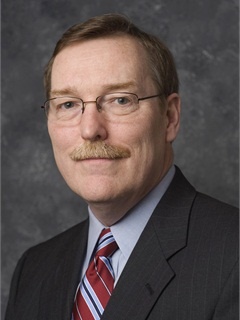
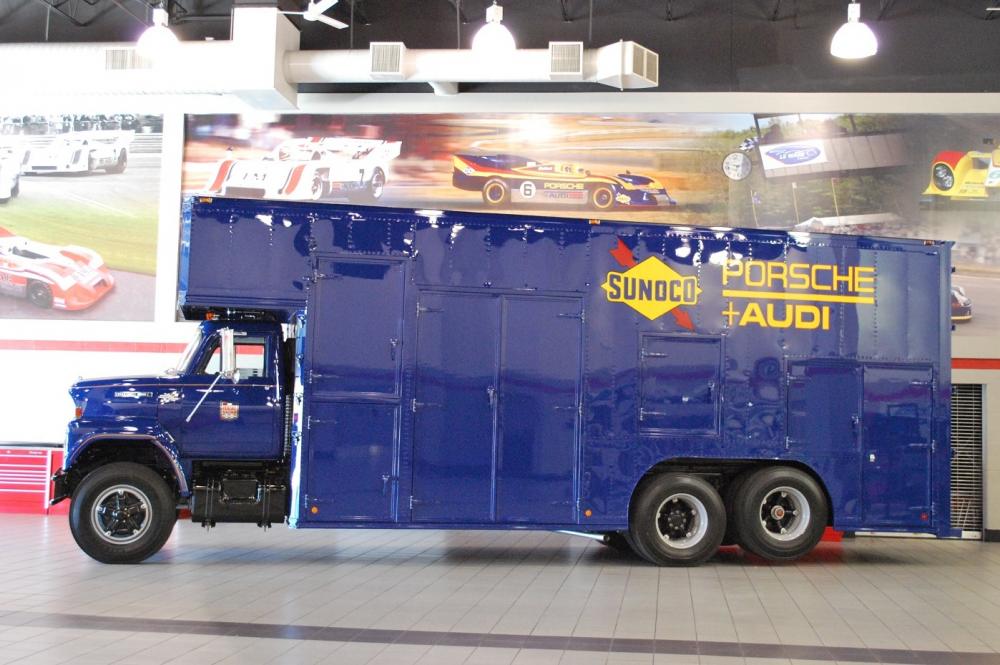
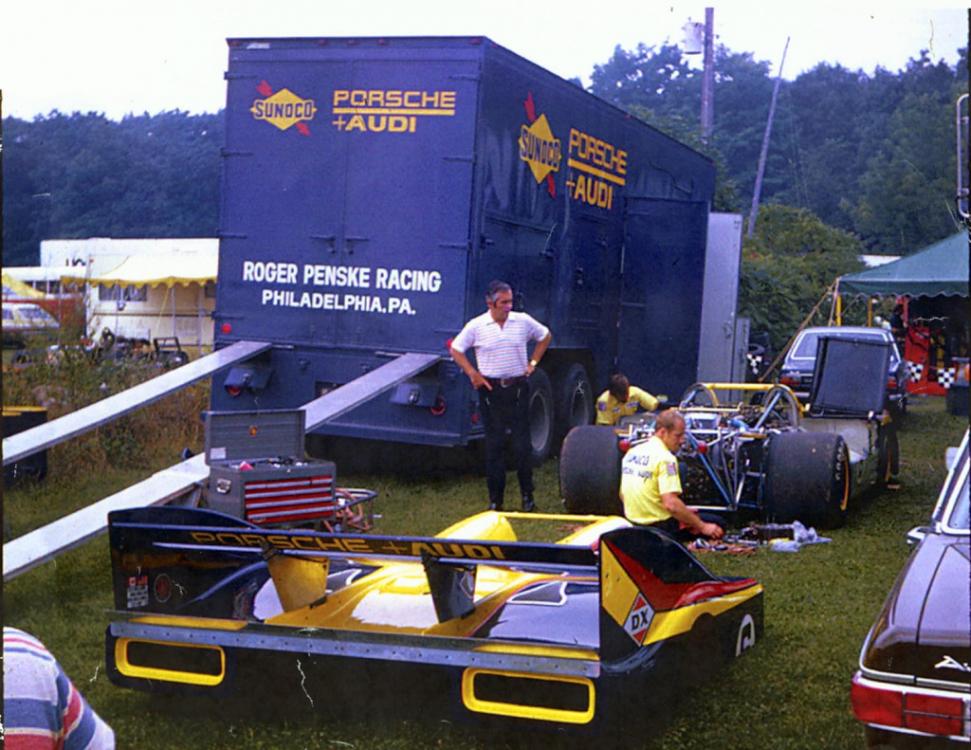
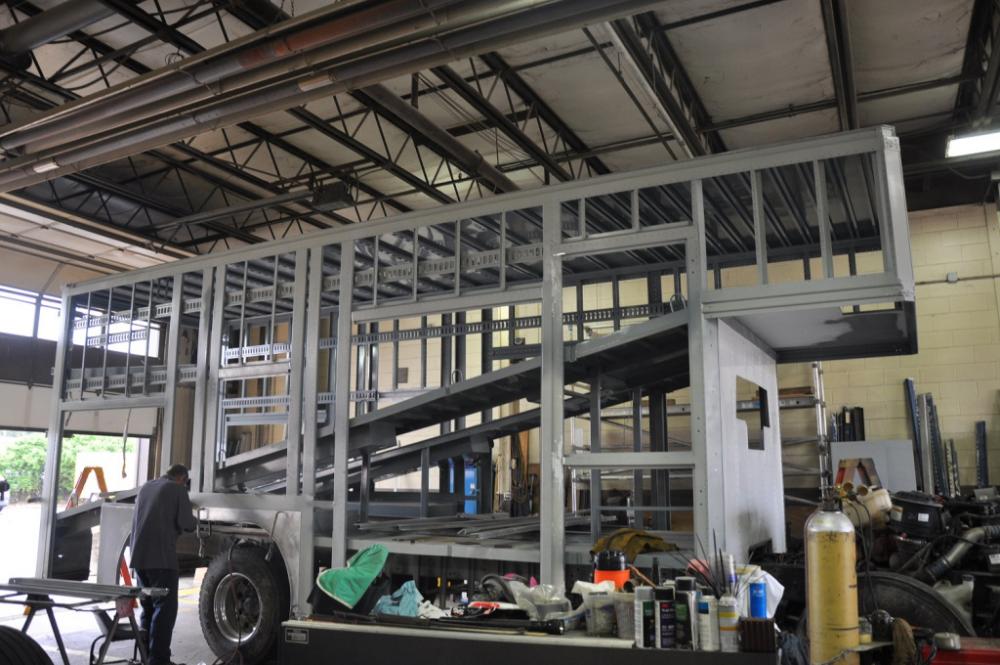
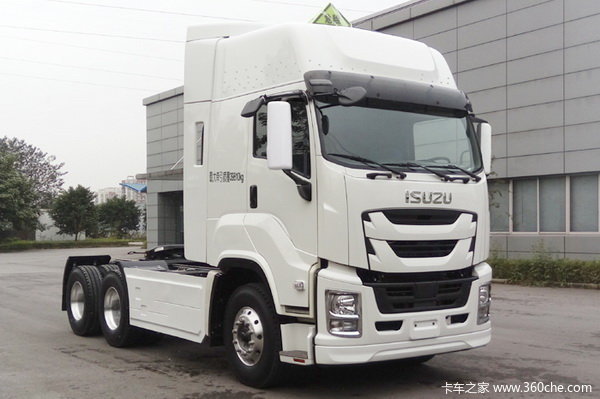
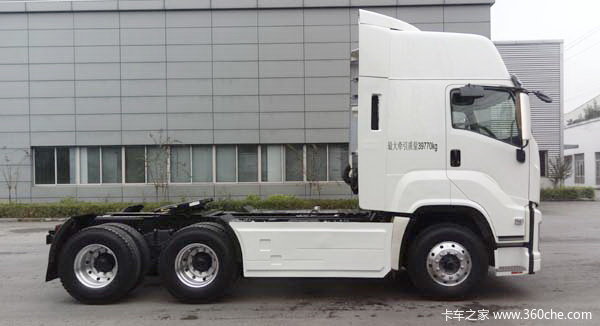
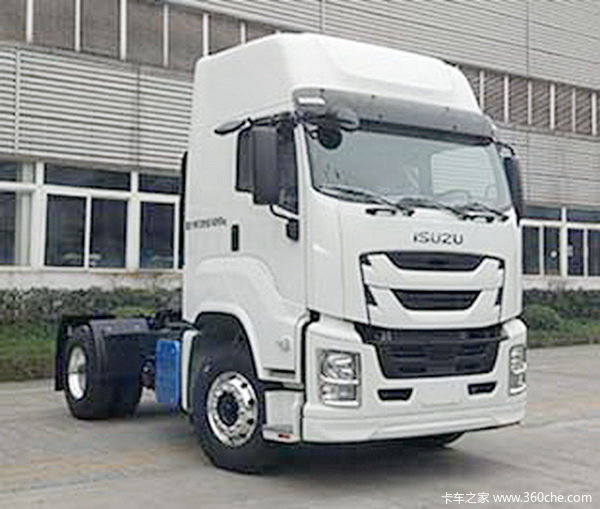
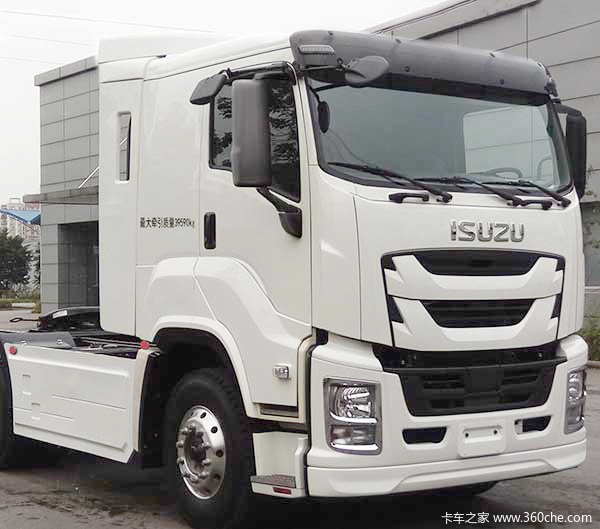
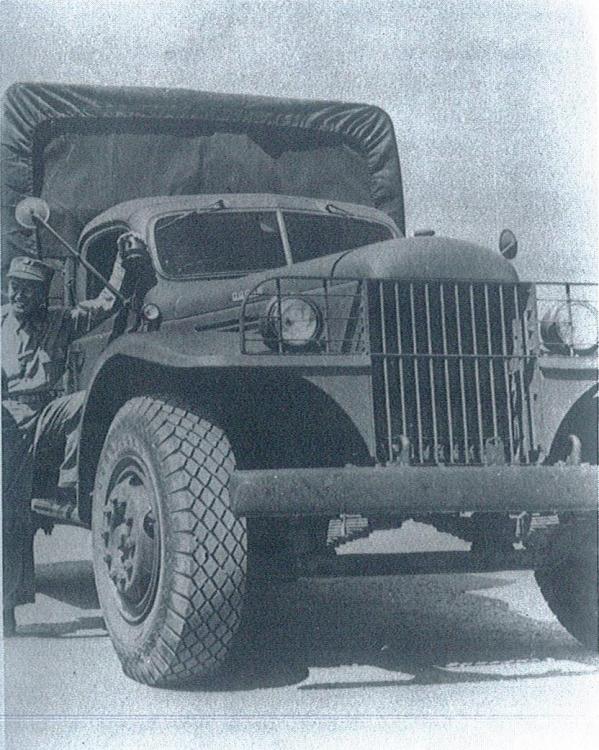
.thumb.jpg.912d666e473444b894d0789bbe598f7a.jpg)
